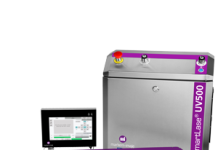Some associations, such as FOGRA in Germany, are incredibly active and engaged, working intimately with their members and able to monetise their services effectively. They offer advice and audits to confirm a printing company’s ability to output prints that meet ISO 12647-2 process control and quality assurance targets and other services.
In the USA, Idealliance has set up it’s G7 certification programme doing much the same thing. In the UK, the British Printing Industries Federation (BPIF) has a similar scheme offering ISO 12647-2 compliance.
Industry associations have a major part to play in driving standardisation and environmental impact improvement. It’s not an easy role to play, given that sustainability comes in many shapes and sizes, just as printing and publishing companies do.
But none of these associations have done much about environmental sustainability, at least not until now. Working with Prism Environmental in the UK, the BPIF has set up a recycling scheme for display and Point of Sale (POS) materials. The idea is for printers in the sector to follow requirements for managing waste and its recycling. This is not about sorting or collection, but rather it is a management scheme that appears to borrow much from the principles ISO 14001 (Environmental management systems). ISO 14001 is one of ISO’s top sellers and it works on the principles of continuous improvement, with certifications that confirm a company achieves its environmental management objectives year on year.
The BPIF scheme is also about improving and maintaining a company’s waste management and recycling. The scheme provides a starting point for a business’s environmental efforts as well as help defining and achieving environmental sustainability improvements. The scheme is specific to the visual display and POS sectors, and is based on a pledge to fulfill various objectives and targets. BPIF members who take part in the scheme will be entitled to use a special logo on communications related to waste management activities, and includes uncertified members. It is expected that scheme participants will share their targets in order to promote environmental sustainability within the industry.
Prismm Environmental’s role is to evaluate applications to the scheme by BPIF members. Their reports will confirm a firm’s current waste volumes and recycling efforts. Annual evaluations will report any increases or declines and Prismm will also record overall recycling, recovery and landfill volumes of display and POS materials. Based on annual reporting from Prismm to the BPIF, the association’s Visual Display and POS Steering Group will use the data for ‘ongoing sector analysis’.
This article was produced by the Verdigris Project, an industry initiative intended to raise awareness of print’s positive environmental impact. Verdigris is supported by: FESPA (www.fespa.com), Fujifilm (www.fujifilm.com/sustainability/), HP (www.hp.com), Kodak (www.Kodak.com/go/sustainability), Practical Publishing (www.practicalpublishing.co.za), Miraclon (https://miraclon.com), Unity Publishing (http://unity-publishing.co.uk) and Xeikon (www.xeikon.com).
THE VERDIGRIS PROJECT
http://verdigrisproject.com/





















